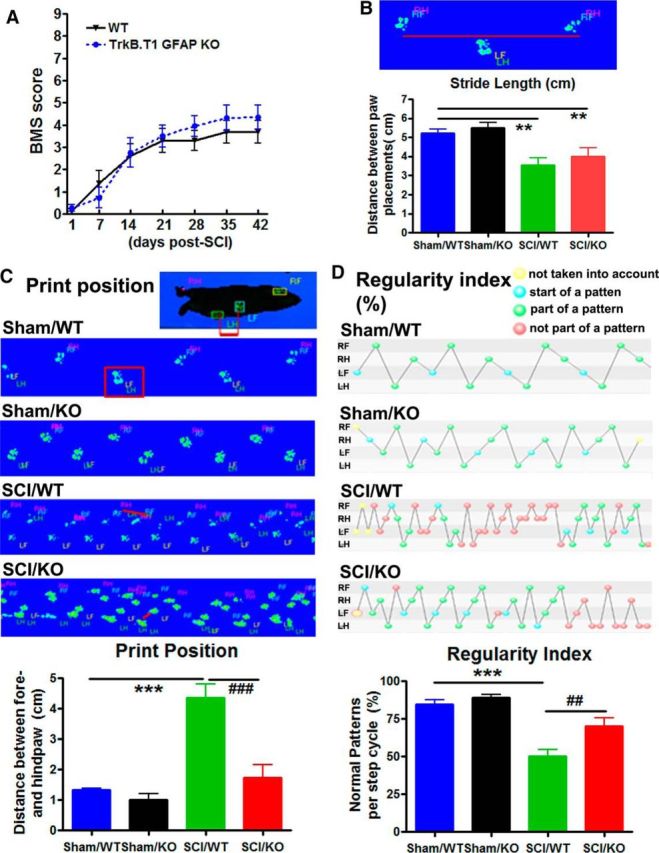Figure 9.

TrkB.T1-GFAP KO mice showed improved recovery of motor function and coordination compared with WT mice at 8 weeks after SCI. A, No significant differences were found in general locomotor recovery on the BMS. N = 8–11 mice/group (2-way ANOVA with repeated measurements). B, Changes in motor recovery were observed in T1-GFAP KO mice using the CatWalk, including stride length, though not to the level of healthy Sham mice. Stride length is shown here through a representative image of two placements of the right hindpaw (RH), in tandem with the right forepaw (RF) and in contrast with the left forepaw (LF) and left hindpaw (LH). C, The distance between the forepaws and hindpaws of the same side is shown here as print position, and is indicated by the red lines. Print position was highly increased in SCI WT mice, but recovered to near-Sham levels in T1-GFAP KO mice, suggesting significant recovery of voluntary motor control in KO animals. D, KO mice also showed significant recovery in coordination as measured by the regularity index when compared with WT mice. The beginning of a step cycle is shown here in blue and subsequent steps within the cycle that fit a standard pattern shown in green, while irregular steps appear in red. T1-GFAP KO mice showed significant recovery of normal stepping patterns compared with WT, as indicated by an increased percentage regularity index. N = 5–6 mice/group. **p < 0.01, ***p < 0.001 versus Sham/WT; ##p < 0.01, ###p < 0.001 versus SCI/WT (2-way ANOVA with Student's Newman–Keuls post hoc analysis).
